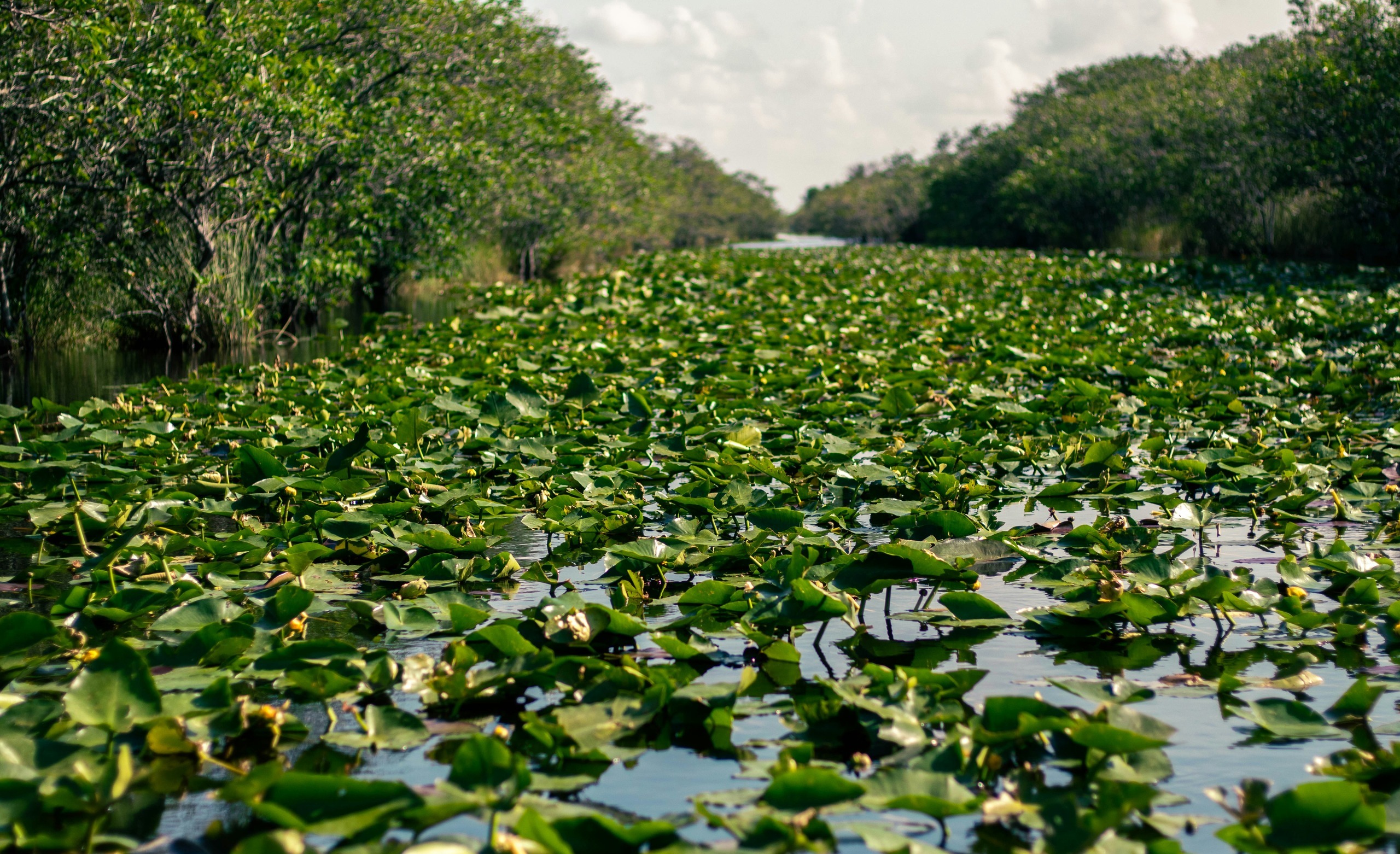
Surviving In The Everglades
Join us as we delve into the art of surviving in the Everglades and uncovering its hidden wonders amidst its unforgiving landscape. Welcome to the untamed wilderness of the Everglades, a mesmerizing and challenging environment where survival skills are put to the ultimate test.
Nestled in the heart of Florida, this unique ecosystem is a haven for diverse wildlife and lush vegetation, but it also hides numerous dangers for those unprepared for its harsh realities.
The Unique Ecosystem of the Everglades
Nestled in the southern tip of Florida lies a one-of-a-kind ecosystem known as the Everglades. This vast expanse of wetlands is home to a diverse range of plant and animal species, many of which are found nowhere else on Earth.
The Everglades’ unique combination of marshes, mangroves, and sawgrass prairies creates a habitat that supports an incredible array of wildlife. From alligators gliding through the water to colorful wading birds soaring above, the sights and sounds of this ecosystem are truly mesmerizing.
One remarkable feature of the Everglades is its slow-moving “River of Grass,” where water flows imperceptibly southward towards the sea. This gentle movement sustains a delicate balance within the ecosystem, providing essential nutrients for plants and animals alike.
Exploring the Everglades offers a glimpse into a world untouched by time, where nature reigns supreme and every corner holds a new discovery.
Dangers and Challenges of Surviving in the Everglades
The Everglades, with its vast expanse of wetlands and diverse wildlife, present a unique set of challenges for those looking to survive in this untamed environment. The weather and climate in the Everglades can be unpredictable, ranging from scorching heat to sudden thunderstorms that flood the landscape in minutes.
Wildlife thrives in the Everglades, from alligators lurking beneath the water’s surface to venomous snakes slithering through the sawgrass. Navigating through this maze of marshes and mangroves can be disorienting, making it easy to get lost without proper skills or equipment.
Finding shelter and water is crucial for survival in the Everglades, where dehydration and exposure are constant threats. It takes resourcefulness to locate safe drinking water sources amidst brackish swamps teeming with bacteria.
Gathering food is another challenge; while there is an abundance of fish and small game like rabbits, sourcing edible plants can be tricky when surrounded by toxic species. In such a harsh environment, adaptation and resilience are key to beating the odds.
A. Weather and Climate
The weather and climate in the Everglades can be unpredictable and extreme. The heat and humidity are relentless, making it essential to stay hydrated at all times. Sudden thunderstorms can roll in with little warning, bringing heavy rain and lightning strikes.
During the wet season, flooding is a common occurrence, turning the landscape into a vast expanse of water. Mosquitoes thrive in these conditions, so insect repellent is a must-have item. In contrast, the dry season brings drought-like conditions, drying up water sources.
Being prepared for rapid changes in weather is crucial for survival in the Everglades. Lightweight clothing that provides sun protection and dries quickly is ideal. It’s important to have a plan in place for seeking shelter during storms or finding higher ground during floods.
B. Wildlife
The wildlife in the Everglades is as diverse as it is fascinating. From the iconic American alligator to the elusive Florida panther, these creatures roam freely in this unique ecosystem. The birds here are a sight to behold, with species like herons, egrets, and ibises gracefully soaring above the marshes.
One must always be cautious of encountering venomous snakes such as the Eastern Diamondback rattlesnake or the Cottonmouth when trekking through the sawgrass prairies. In addition to reptiles and birds, mammals like raccoons and marsh rabbits also call this wetland home.
Exploring the Everglades offers a chance to witness nature at its rawest form – untamed and unpredictable. It’s essential for visitors to respect these animals’ habitats and observe from a safe distance for both their safety and that of the wildlife.
Tips for Surviving in the Everglades
It is essential to prioritize navigation and orientation. The vast expanse of marshes and waterways can quickly disorient even the most experienced outdoorsman. Carry a compass or GPS device, study maps beforehand, and pay close attention to landmarks.
Finding shelter and water are crucial for survival in this unforgiving environment. Be prepared with waterproof gear, such as tarps or tents, to protect against frequent rain showers. Collect rainwater for drinking but always purify it before consumption.
In terms of gathering food, familiarize yourself with edible plants and fruits native to the area. Learn basic fishing techniques to catch freshwater fish like bass or catfish. Avoid dangerous encounters with wildlife by storing food properly and respecting their natural habitat.
Remember that preparation is key when embarking on an adventure in the Everglades. Stay informed about weather conditions, pack essentials like insect repellent and first aid supplies, and always let someone know your itinerary before heading out into this unique ecosystem where survival skills are put to the test.
A. Navigation and Orientation
While venturing into the vast wilderness of the Everglades, navigating and orienting yourself is crucial for survival. The landscape can be deceiving with its seemingly endless stretches of sawgrass and waterways. To avoid getting lost, it’s essential to have a reliable map or GPS device on hand at all times.
Due to the dense vegetation that can obstruct views, using landmarks such as cypress trees or distinctive rock formations can help you stay on course. Pay attention to the sun’s position in the sky to gauge direction if your equipment fails.
Learning basic navigation skills like reading a compass or understanding topographical maps can make a significant difference when traversing this intricate ecosystem. Practice using these tools before embarking on your journey so you feel confident in your abilities to navigate through this unique environment.
B. Finding Shelter and Water
When it comes to surviving in the Everglades, finding shelter and water is crucial for your well-being. The vast expanse of wetlands may seem daunting, but with resourcefulness and preparedness, you can thrive in this unique ecosystem.
Shelter options range from natural solutions like fallen trees or caves to portable tents for added protection. Ensuring your shelter is elevated above the ground can help avoid contact with potentially dangerous wildlife.
Water sources are abundant in the Everglades, but not all are safe for consumption. Boiling or using purification tablets can make water potable. Collecting rainwater or tapping into tree sap can also provide hydration.
Remember, adapting to your surroundings and utilizing available resources will increase your chances of survival in the unpredictable wilderness of the Everglades.
C. Gathering Food
When it comes to surviving in the Everglades, finding food is a crucial aspect of staying alive. The unique ecosystem of the Everglades provides a variety of edible plants and animals that can sustain you in this challenging environment.
One way to gather food in the Everglades is by foraging for wild edibles such as cattails, saw palmetto berries, and marsh purslane. These plants are rich in nutrients and can be found throughout the wetlands. Another option for sourcing food is through fishing.
The Everglades are teeming with fish species like bass, catfish, and sunfish. You can try your hand at fishing using basic equipment like a fishing rod or spear. Hunting small game like rabbits, squirrels, or birds can also provide sustenance in the Everglades.
Remember to check local regulations and restrictions before hunting any wildlife. By learning about the edible resources available in the Everglades and honing your survival skills, you can increase your chances of thriving in this challenging yet bountiful wilderness.
Tools and Equipment Needed for Survival in the Everglades
It’s essential to be prepared with the right tools and equipment to ensure your survival in this unique wilderness. One crucial item is a reliable map or GPS device to navigate through the complex waterways and dense foliage of the region. A sturdy machete can come in handy for cutting through vegetation and clearing paths.
Carrying a waterproof backpack with essentials like food, water purification tablets, first aid kit, and emergency supplies is vital for sustaining yourself in this challenging environment. Additionally, having a quality multitool can serve multiple purposes from fixing gear to preparing meals.
Investing in a durable tent or hammock for shelter, along with a high-quality sleeping bag rated for the unpredictable weather conditions of the Everglades is key to staying safe and comfortable during your stay. Don’t forget insect repellent and sun protection gear to ward off pesky bugs and harsh UV rays while exploring this breathtaking ecosystem.
Alternative Ways to Experience the Everglades
Apart from survival challenges, the Everglades offer alternative ways to experience this unique ecosystem. One way is through airboat tours that glide over the marshes, providing a thrilling adventure with an up-close view of wildlife and vegetation. Kayaking or canoeing along the water trails allows for a peaceful exploration of hidden corners and serene beauty within the wetlands.
For those seeking a more immersive experience, camping in designated areas offers a chance to spend nights under starlit skies surrounded by nature’s symphony. Guided eco-tours led by knowledgeable naturalists provide insights into the delicate balance of this biodiverse region while minimizing impact on the environment.
Photography enthusiasts can capture stunning images of sunsets reflecting off mirrored waters or rare bird species in their natural habitat. Birdwatching excursions reveal colorful feathered residents like roseate spoonbills and elusive snail kites. Whether it’s adrenaline-pumping adventures or tranquil escapes, there are endless ways to connect with the captivating allure of the Everglades.
Conclusion: The Beauty and Perils of the Everglades
As you venture into the Everglades, remember to respect its beauty and be prepared for its challenges. The unique ecosystem of the Everglades offers a one-of-a-kind experience for those willing to explore its mysterious waters and lush landscapes. By understanding the dangers and arming yourself with knowledge and essential survival skills, you can increase your chances of thriving in this untamed wilderness.
Whether it’s navigating through the maze-like waterways, finding shelter from unpredictable weather conditions, or sourcing food from nature’s bounty – surviving in the Everglades requires resilience, adaptability, and a deep appreciation for nature’s wonders.
So pack your gear, sharpen your survival instincts, and embark on an unforgettable journey into the heart of the Everglades. Embrace its beauty while respecting its perils – for here lies a place where adventure meets challenge in perfect harmony.




